Anna von Sachsen – Gattin von Wilhelm von Oranien
124 Seiten, mit Stammtafeln und 64 SW-Bildern, ISBN 978-1-9733-1373-1, 4. überarbeitete Auflage, € 7,80
bei amazon.de
Bilder-Galerie

Wilhelm III. war das einzige Kind von Wilhelm II. von Oranien (1626-1650) und dessen Gattin, der englischen Prinzessin Maria Stuart (1631-1660). Er wurde acht Tage nach dem Tod seines Vaters, der sich die gefährlichen Pocken zugezogen hatte, am 14. November 1650, geboren.

Nach dem Tod seines Vaters Wilhelm II. von Oranien im Jahr 1650 weigerten sich die Generalstände der Vereinigten Provinzen in den Niederlanden, Wilhelm III. von Oranien als den Nachfolger des Verstorbenen anzuerkennen. Das Amt des Statthalters, das die Oranier in den letzten Jahrzehnten innehatten, wurde aufgehoben und die "statthalterlose Periode" begann, die 22 Jahre lang währen sollte.

Wilhelm III. "was a quiet, serious and solitary child. ... Emotional disturbances always affected William's delicate health and he was very ill following the news of his mother's death." (in: Maureen Waller: Ungrateful Daughters – The Stuart Princesses who stole their father’s crown, id., pp. 162/164).

Als Wilhelm III. zehn Jahre alt war, beschrieb ihn seine Großtante Elisabeth Stuart, die Winterkönigin: "I finde both hie [Wilhelm III.] and Lisslotte [ihre Enkelin Liselotte von der Pfalz] verie much grown. My little nephue is verie inquisitive of her, he liked her verie well but she coulde not abide him. He mends strangelie and grows verie strong, you cannot imagin the witt that he has, it is not a witt of childe who is suffisant, but of a man, that doth not pretend to it, he is verie extraordinarie childe and verie good natured." (in: Maureen Waller: Ungrateful Daughters – The Stuart Princesses who stole their father’s crown, id., p. 165).

Nach dem Tod seiner Mutter kam Wilhelm III. in die Obhut seines Vormundes, des Kurfürsten Friedrich Wilhelm von Brandenburg, und lebte in Kleve: "At Cleves William went on a wild boar hunt and witnessed his first kill. Hunting was to remain a life-long passion. He also began to save up his pocket money to buy paintings. When he was fourteen, a new page named Hans Willem Bentinck entered his household. Bentinck had experienced the opposite of William's lonely childhood in a large family of brothers and sisters. He shared the Prince's taste for art and the hunt. ... Bentinck became William's dearest friend for life, not hesitating to risk his own life when William, at twenty-four, contracted smallpox. Contemporaries believed that if a healthy person shared the bed of a smallpox victim, that person would draw off some of the disease, giving the sufferer a chance of recovery. William recalled that 'during sixteen days and nights I never once called out but he answered me.' Both men survived the disease, although it weakened William's already delicate constitution ... 'I am so much your friend that I feel all that happens to you as if it had happened to myself,' he wrote to Bentinck in 1665 to console him on the death of his father. William revealed a warmth and generosity that would have amazed those who found his manner cold and restrained." (in: Maureen Waller: Ungrateful Daughters – The Stuart Princesses who stole their father’s crown, id., pp. 165-166).




Wilhelm III. und seine spezifischen Vorstellungen, wie seine zukünftige Gattin sein sollte: Wilhelm III. war schon im Jahr 1674 bei seinem Onkel Karl II. Stuart als zukünftiger Gatte seiner Nichte Mary, die gleichzeitig Wilhelms Cousine war, im Gespräch. Aber im Gegensatz zu seinen männlichen Zeitgenossen nahm er die Heirat sehr ernst. Er wollte nur eine Frau heiraten, die er persönlich mochte und die zu ihm passte. Er war also auf der Suche nach seiner Seelengefährtin. Über seine Begegnung mit dem englischen Abgesandten Sir William Temple bezüglich dieses Themas berichtet Letzterer Folgendes: "'... he [Wilhelm III.] met me one morning by appointment in the garden of his Hounslaryko palace, and there, after telling me that his friends often pressed him to marry, and descanting on the offers he had received from the high-born damsels in France and Germany, and discoursing on love and marriage matters, remarked that he wished to know somewhat of the person and disposition of the young Lady Mary; for though it would not pass in the world for a Prince to seem concerned in those particulars, yet for himself he was so, and to such a degree, that no circumstances of fortune and interest would engage him without those of person, especially those of humour and disposition. As for himself, probably he would not be very easy for a wife to live with; he was sure he should not, to such wives who were generally in the courts of this age; that if he should meet with one to give him trouble at home, it was what he should not be able to bear, who was like to have enough abroad in the course of his life. Besides, after the manner in which he was resolved to live with a wife, which should be the very best he could, he would have one that he thought likely to live well with him, which he thought chiefly depended on her disposition and education; and that if I knew anything particular in these points of the Lady Mary, he desired I would tell him freely.' Temple replied, 'that of his own observation he knew nothing of the temper and disposition of the Princess, but that he had heard her highly spoken of by his wife, his sister, and also by her governess, Lady Villiers.'" (in: Francis Lancelott: The Queens of England and their Times, Volume II, id., p. 796).
Aber Wilhelm III. gab sich nicht zufrieden mit den nur mündlichen Beschreibungen seiner zukünftigen Gattin. Er wollte sie selbst sehen und kennenlernen. So machte er sich nach dem Ende seines Feldzuges im Jahr 1677 nach England auf, wo er am 9. Oktober eintraf: "He was received by Charles and his brother [Jakob II. (VII.), also seinen beiden Onkeln] with marked attention; but, to their astonishment, he informed them through Temple that he was resolved to see the Princess Mary, before entering into discussions of business, as until he had made himself acquainted with her, it was impossible for him to be in love with her." Und so sah er sie, und er mochte sie! Sein Onkel, der englisch-schottische König Karl II. Stuart, wollte, wie es allgemein üblich war, diese Heirat mit einem Friedensvertrag verbinden, aber bekam erneut eine Ablehnung von seinem Neffen: "But to this he [Wilhelm III.] demurred: 'he must end his marriage before he entered upon the peace treaty,' he said, 'otherwise his allies would be apt to believe that he had made his match at their cost: and for his part, he would never sell his honour for a wife.'" Hierzu fand sich Karl II. Stuart jedoch nicht bereit. Aber er kannte seinen Neffen Wilhelm nicht, der gab nämlich nicht nach. Also fügte sich der König: "Well, I never yet was deceived in judging a man’s honesty by his looks, and if I am not deceived in the Prince’s face, he is the honestest man in the world. I will trust him, and he shall have his wife, and you, Sir William Temple, shall go immediately and tell my brother so, and that it is a thing I am resolved on." (in: Francis Lancelott: The Queens of England and their Times, Volume II, id., p. 796).
"As to the poor bride [Mary II. Stuart], she was not so much as asked if she had any objection to enter the married state; and when the Duke of York [ihr Vater] took her into her closet, on the twenty-first of October, and informed her of the proposed marriage between her and the Prince of Orange, she wept bitterly all that afternoon, and all the following day. Indeed, for her the suit had no charms, she had already fixed her affections on a handsome young Scotch noble …" Aber die Frauen in der Vergangenheit hatten kein Recht, sich den Gatten selbst auszusuchen. "On Sunday, the fourth of November 1677 the Lady Mary of York was solemnly married to William, Prince of Orange. The nuptials were performed in the bride’s bed-chamber, by Compton, Bishop of London, and in the presence of Charles II., and his consort, Katherine of Braganza, and the Duke and Duchess of York [dem Vater und der Stiefmutter von Mary]. Charles gave his dejected niece away, and was unusually merry on the occasion. In reply to the question, 'Who gives this woman?' he loudly exclaimed, 'I do;' and when the bridegroom, at the moment of endowing his bride with all his worldly goods, placed a handful of gold and silver coin on the prayer-book, Charles with an arch look, told his niece to take it up and put it in her pocket, for it was all clear gain. The ceremony concluded, the newly-wedded pair were formally congratulated by the court and the foreign ambassadors; and at night, after partaking of a right royal supper, they received the accustomed honours from the King, Queen, and court in bed. On the following morning, the Prince presented his bride with jewels worth £40,000 … whilst throughout the chief cities in Great Britain the bells rang, the canon boomed, the conduits ran with wine, and the people drank the health of their Highnesses with long and loud acclamations. The Princess Mary had been married but two days, when the birth of a fine healthy brother [ihres Stiefbruders Karl] destroyed the probability of her succeeding to the throne of Great Britain. William of Orange viewed the event as a misfortune; and, although he stood sponsor to the unwelcome babe, he exhibited marked symptoms of disappointment and vexation. At this period the small-pox was raging at St. James’s, the Lady Anne of York [die jüngere Schwester von Mary] was confined to her bed with it, and although Mary was urged by the Duke of York and by the Prince her husband, to quit the infected palace, neither threats, persuasions, not the danger of infection could prevail. She wished to be near her sorely sick sister, she said, till the hour of her departure from England; a concession which she succeeded in wringing from her husband and her indulgent father." (in: Francis Lancelott: The Queens of England and their Times, Volume II, id., pp. 797-798).

"This able administrator [Wilhelm III.] and soldier was not born to be a popular idol. Both in appearance and manner he was unprepossessing. His rigid and pallid face, pitted by small-pox, was redeemed only by piercing eyes and an eagle nose. His body was puny, almost deformed, with one shoulder higher than the other. Dr. Burner, William's Scottish chaplain ... wrote of his master: 'He was always asthmatical and suffered from a constant deep cough. His behaviour was solemn and serious, he spoke little and very slowly and most commonly with a disgusting dryness.'" (in: Marie Ruan Hopkinson: Anne of England – The Biography of a great Queen, id., p. 113).

Von diesem Porträt von ihm gibt es unzählige Kopien.


Einen Platz in der Geschichte bekam Wilhelm III. als der Befreier des englisch-schottischen Volkes von der Tyrannei ihres Königs Jakob II. (VII.) Stuart: Die glorreiche Revolution ohne Blutvergießen. Bereits Im Jahr 1685 war Wilhelm III. insgeheim im Begriffe, seinen katholischen Onkel mütterlicherseits und Schwiegervater, den schottisch-englischen König Jakob II. (VII.), der von den Franzosen finanziell unterstützt wurde, von seinem Thron zu stoßen. Anfang November 1688 wagte er schließlich den von der großen Mehrheit der Engländer gewünschten Sprung auf die britischen Inseln und bemächtigte sich des Thrones seines Onkels und Schwiegervaters Jakob II. (VII.): "'The Glorious Revolution' had been accomplished without civil war or bloodshed, and all England rejoiced in the coming of the deliverer, William of Orange. On December 18th, 1688, the people of London gathered in huge crowds to await his arrival. It was a wet and stormy day and the multitudes congregated in the streets through which he was expected to pass were buffeted by the wind. With their homespun garments clinging to them and the orange ribbons [eines der Embleme der Oranier, siehe Anna von Sachsen] with which they had decked themselves hanging in sodden masses, but with their hearts warmed by zeal, these sturdy people defied the wind and rain in the hope that they might catch a glimpse of the man who had rescued them from their oppressor. They were disappointed, for William, who scorned 'cheers and shoutings,' avoided them by going through St. James's Park. His entry into London was a typical instance of his want of consideration for the feelings of the people and of his contempt for popularity." (in: Marie Ruan Hopkinson: Anne of England – The Biography of a great Queen, id., p. 113).
Das englische Volk, das Parlament und die Kirche hatten Wilhelm III. gebeten, ihnen in ihrem Kampf gegen den Tyrannen Jakob II. (VII.) Stuart zu helfen: "... which invitation he [Wilhelm III.] accepted, and landed at Torbay the fifth of November, 1688, publishing a declaration which set forth all the oppressions of the last reign … declared for a free parliament, in which things were to be so settled that there should be no danger of falling again into slavery, and promised to send back all his foreign forces as soon as this was done. When the news of his landing was spread through England, he was welcomed by the universal acclamations of the people. He had the hands, the hearts, and the prayers of all honest men in the nation: every one thought the long-wished-for time of their deliverance was come. King James was deserted by his own family, his court, and his army. The ground he stood upon mouldred under him; so that he sent his Queen and foundling [seinen Sohn Jakob (III.)] to France before him, and himself followed soon after. When the Prince came to London, he disbanded most of those regiments that were raised from the time he landed; and King James’s army that were disbanded by Feversham, were ordered to repair all again to their colours." (in: Francis Lancelott: The Queens of England and their Times, Volume II, id., p. 807).
"At last, after many heated debates, the Convention agreed by a final vote that the Prince and Princess of Orange [Wilhelm III. von Oranien und seine Gattin Mary II. Stuart] should be asked to accept the Crown jointly, although Mary was to have no share in the administration except when her husband was abroad." (in: Marie Ruan Hopkinson: Anne of England – The Biography of a great Queen, id., p. 115).

"The Coronation [zum König von England und Schottland am 11. April 1689] was a miserable affair, for early that morning a messenger arrived bringing the disturbing news that James [Jakob II. (VII.)] was about to land in Ireland and that the Irish were flocking to him. Whether from fear of what might be the outcome of this expedition or because of their dislike of the new sovereign, many of the nobles stayed away from the ceremony and only a few of the bishops attended." (in: Marie Ruan Hopkinson: Anne of England – The Biography of a great Queen, id., p. 116).
"All this time William had been planning a grand campaign in Ireland, and, after pouring troops into that country, he himself took the field in the summer of 1690 and routed the Irish army at the Battle of the Boyne on the 1st of July. Prince George [von Dänemark und Norwegen, der Gatte von Anne Stuart] had accompanied the King, but although he distinguished himself during the campaign, William deliberately treated him with disdain, and would not even allow his brother-in-law to drive in the same carriage with him." (in: Marie Ruan Hopkinson: Anne of England – The Biography of a great Queen, id., pp. 123-124). Er hatte mittlerweile nicht nur seinen Schwager, sondern auch seine Schwägerin Anne Stuart und besonders deren beste Freundin Sarah Jenyns oder Jennings, später Herzogin von Marlborough, und deren Gatten John Churchill, den späteren Herzog von Marlborough, in Verdacht, für seinen Schwiegervater Jakob II. (VII.) Stuart, der zu gut über die politischen und privaten Verhältnisse in England in seinem Exil in Frankreich informiert zu sein schien, als dessen Spione tätig zu sein. Seine Gattin Mary II. Stuart wünschte erst und schließlich befahl ihrer Schwester Anne Stuart, Sarah Jenyns von ihrem Hof zu entfernen, was jene jedoch nicht tat, entweder weil sie wirklich ebenfalls als Spionin tätig war oder aus Dummheit, weil sie nie begriff, was um sie herum eigentlich geschah. "An overwhelming blow was soon to fall upon the Churchills [John Churchill und seine Gattin Sarah Jenyns oder Jennings] ... On May 5th, 1692, Marlborough was suddenly arrested on a charge of high treason and sent to the Tower. It seems that in the Palace of the Bishop of Rochester, at Bromley in Kent, several treasonable letters had been discovered, which appeared to have been signed by Marlborough. ... It had been suspected for some time by William that Marlborough, Godolphin and other noblemen about the Court were in correspondence with the Court of the exiled James at St. Germains, and some might be ready to support him against William if the prospects of the former at any time seemed sufficiently brilliant to warrant their defection. That such men as Godolphin and Marlborough should contemplate reverting to their allegiance to James, although they had sworn fealty to William, was not quite so heinous an offence from their point of view as it must appear to us. Marlborough could not but feel that it was to a great extent owing to his own action on the King's behalf that William had ascended the Throne, and he expected a better reward than a mere Earldom. It was galling to him and to many other Englishmen to see the Dutch favourites receiving some of the best offices. Besides, a great climber such as Marlborough was bound to think that as far as his own ambitions were concerned he had backed the wrong horse, and repenting of his defection, he would have wished to have his old master back on terms. It seems almost incredible, however, that he would have assisted a scheme for bringing back a Catholic King and plunging his country into civil war for the sake of his own ambition; yet James [Jakob II. (VII.)] and Louis [XIV.] seem to have believed that Marlborough would bring about a revolt of the English army at home in support of an invasion of England. William was away on the Continent with a large body of English troops, when it was arranged to carry out his invasion. The plan seems to have been that the King of France should march with his great army into Flanders, that William should be assassinated there, and that then the English troops would have to be withdrawn from the Continent. Afterwards Louis would be able to make himself master in Flanders and force Holland to give in, while the union of James's army of invasion with the English army led by Marlborough would place James on the throne. This attractive French programme was considerably disarranged when Marlborough was clapped into the Tower. While James was encamped with his army near Cherbourg awaiting transport to England, Bishop Burnet says that 'we in England were all this while very secure and did not apprehend we were in danger.'" (in: Marie Ruan Hopkinson: Anne of England – The Biography of a great Queen, id., pp. 131-132).

Seine beiden besten Freunde waren Johann Wilhelm Bentinck (1648-1709), der erste Graf von Portland, und Arnold van Keppel (1669-1718), der erste Graf von Albemarle.


Hatte Wilhelm III. eine Geliebte namens Elizabeth Villiers? Wenn man sich die vorhandenen zeitgenössischen Quellen anschaut, muss die Frage mit "Nein" beantwortet werden. Wilhelm III. und Mary II. Stuart hatten sich sehr lieb. Sie waren in der Tat Seelengefährten. Elizabeth Villiers, mit der Mary aufgewachsen war und die ihr mit ihren zwei Schwestern Anne und Katherine an den niederländischen Hof gefolgt war, war eine wichtige "Spionin" für Wilhelm III. und die Niederlande, die durch ihre häufigen Begegnungen mit Wilhelm III. zu seiner Geliebten erklärt wurde. Getratscht und geschwatzt und Gerüchte in die Welt gesetzt wurde es schon, seitdem es uns Menschen gibt. Und es ist nicht einfach, die Wahrheit von der Lüge zu unterscheiden. Marys Stiefmutter und ihr Vater haben böse Gerüchte über Wilhelm III. von Oranien, wie er angeblich seine Frau behandeln würde, verbreiten lassen. Die zeitgenössischen Quellen - Briefe von Mary und Wilhelm III. - widersprechen der Behauptung. Elizabeth Villiers war als Spionin für Wilhelm III. tätig: "They [Elizabeth Villiers und ihre Schwester Anne] gave dinner parties and other entertainments to the foreign ministers, who, be it observed, were sent, not to William of Orange, but to the States of Holland; and artfully drew from them intelligence of their intended proceedings with the States, and imparted the same to the Prince of Orange. At the head of this clique was Elizabeth Villiers ... and next to her in authority stood Anne Villiers ..." (in: Francis Lancelott: The Queens of England and their Times, Volume II, id., p. 800). Und: "Witty and intelligent Elizabeth [Villiers] captivated William by her conversation, and it was these qualities that put her in great demand on the diplomatic social circuit at The Hague. It is possible that she acted as an agent for William, and their late-night trysts were more likely to have been debriefing sessions than sexual encounters." (in: Maureen Waller: Ungrateful Daughters – The Stuart Princesses who stole their father’s crown, id., p. 110). Man sollte zudem nicht vergessen, dass aus der angeblich sexuellen Beziehung zwischen Elizabeth Villiers und Wilhelm III. keine Kinder hervorgingen. Elizabeth Villiers heiratete schließlich am 25. November 1695 ihren Cousin Lord George Hamilton (1666-1737), den zukünftigen Grafen von Orkney, dem sie drei Töchter schenkte: Anne (1696-1756), France (um 1700-1772) und Henrietta. Außerdem hätte Wilhelm III., der sich sehr einsam nach dem Tod seiner Gattin fühlte, dann zumindest nicht seine Geliebte behalten? Wenn sie denn wirklich seine Geliebte war?




"The war on the Continent had been concluded in 1697 by the Treaty of Ryswick, but the King [Wilhelm III.] knew that this peace would be hardly more than a truce unless the succession to the throne of Spain could be settled by arrangement. Now a chronic invalid from asthma and dropsy, William had hoped to be able to spend the last few years of his life tranquilly in his beloved Holland. This expectation was frustrated by a sudden outbreak of party faction in England, engendered by the feeling of security which had existed there since the conclusion of peace. The death of the Duke of Gloucester [dem Sohn von Anne Stuart im Jahr 1700] had brought new hopes to the Jacobites [Jakob II. (VII.) und seinen Anhängern] who vigorously started to prepare plans for the return of the exiled James [Jakob II. (VII.]. The Tories, for their part, were looking forward with eagerness to the time of Anne's succession, for they counted upon her well-known sympathy with the High Church and Tory parties; whilst the Whigs, who had been so much in favour, found themselves out of sympathy with both William and their own Ministry. ... With things in this uncertain state it was fully recognised that on the death of William only the life of Anne stood between the country and a possible civil war, or the triumph of the Jacobite cause with Louis [XIV.] as its godfather. To obviate the possibility of a Catholic succession or a dynastic crisis, and to settle upon a Protestant heir - in case Anne had no more children - the Dowager Electress Sophia of Hanover [= Sophie von der Pfalz, Kurfürstin von Hannover], who was the grand-daughter of James I [= Jakob I.] of England was invited to become heir presumptive to the Throne upon the deaths of William and Anne without issue. This invitation the Electress accepted on behalf of herself, or her children after her. Subsequently, in 1701, the Tory House of Commons passed the Act of Settlement, which William pressed upon them. This Act settled the Crown of England upon the Electress and her descendants, but at the same time limited the powers which the Crown, its Ministers and officials might exercise after the Hanoverian Succession. There was another consideration which may have influenced William in his desire to have the Act of Settlement passed during his lifetime, and that was his fear of the Jacobite pressure which might be forced upon Anne after his death, for he looked upon all women as being contemptibly weak, and his sister-in-law as particularly so." (in: Marie Ruan Hopkinson: Anne of England – The Biography of a great Queen, id., pp. 160-162).
"On the morning of February 20th [1702], the King, one of the finest horseman in Europe, was riding his favourite horse, Sorrel, through the fields beyond the palace [of Hampton Court]. The horse stumbled, it is said on a mole-hill, and threw his rider to the ground, breaking his collar bone. It was bandaged, and if William had been willing to rest until it was properly set the injury would probably not have proved fatal, but important business had to be transacted in London, and he insisted upon driving to town that day. The jolting of the coach over bad roads caused the bandages to slip, and William was in great pain when he arrived at Kensington that night. The danger was not at first recognised, but it soon became apparent that he was gradually sinking. On Sunday morning, March 8th, 1702, he died, holding Bentinck's [= Hans Willem Bentinck, 1st Earl of Portland] hand to his heart, with the Archbishop of Canterbury, Bishop Burnet and others of his household, around him." (in: Marie Ruan Hopkinson: Anne of England – The Biography of a great Queen, id., p. 164).

Aber anders als es sich sein Cousin Friedrich I. (1657-1713), der König von Preußen und Kurfürst von Brandenburg, gewünscht hatte, hatte Wilhelm III. den Sohn seines bereits verstorbenen Cousins Heinrich Casimir II. von Nassau-Dietz (oder Nassau-Diez), Johann Wilhelm Friso (1687-1711), im Geheimen zu seinem Universalerben erklärt. "Was den reichen oranischen Hausbesitz anbetraf, so waren die brandenburgischen Hoffnungen ursprünglich sehr viel weiter gegangen. Denn König Friedrich war der nächste Verwandte des am 19. März 1702 verstorbenen Wilhelm III. Dieser, der brandenburgischen militärischen Hilfe bedürftig, hatte den König auch in seinen Hoffnungen gelassen, im stillen aber einen entfernten Verwandten, den Grafen von Nassau-Diez, zum Universalerben eingesetzt. Daraus ist ein langwieriger Erbstreit erwachsen, der Preußen 1732 noch einige weitere (niederländische) Positionen einbrachte, die, da sie den Erben kaum von Wert waren, Friedrich der Große bei der ersten Gelegenheit wieder veräußert hat." (in: Peter Mast, Die Hohenzollern in Lebensbildern, ebenda, S. 88).
als Buch und E-book

als Buch und E-book
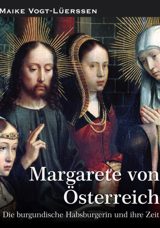
Margarete von Österreich – Die burgundische Habsburgerin und ihre Zeit
seit November 2017 als Buch in überarbeiteter Version bei amazon.de erhältlich, 492 Seiten, mit 216 SW-Bildern, € 22,06; ISBN 978-1-9731-9249-7
als E-BOOK bei amazon.de mit Stammtafeln und 219 Bildern, davon 149 in Farbe, Eigenproduktion 2014, € 18,41
als Buch und E-Book
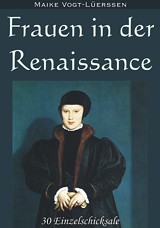
Frauen in der Renaissance – 30 Einzelschicksale
seit Oktober 2017 als Buch in überarbeiteter Version bei amazon.de erhältlich, 432 Seiten, mit 304 SW-Bildern, € 20,20; ISBN 978-1-5498-9445-9
ab Dezember 2014 als E-Book in überarbeiteter Version bei amazon.de erhältlich, mit 346 Bildern (davon 268 in Farbe), € 18,03
Nun auch als Buch
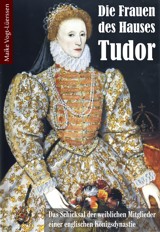
als Buch bei amazon.de: 552 Seiten, mit Stammtafeln und 292 sw Bildern, Independently published, 1. Auflage, ISBN 978-1-9768-8527-3, € 31,84 (großes Buchformat: 21 x 27 cm)
als E-Book bei amazon.de erhältlich, ca. 1.000 Seiten mit Stammtafeln und 292 Bildern, € 29,89
als E-Book und als Buch

als Buch
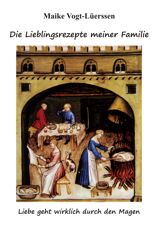
Die Lieblingsrezepte meiner Familie – Liebe geht wirklich durch den Magen (3. Auflage)
bei amazon.de:126 Seiten mit farbigen und schwarz-weißen Bildern, Independently published, ISBN 979-8-7648-5958-3, € 13,28
Buch und e-Book

Lucrezia Borgia – Das Leben einer Papsttochter in der Renaissance
als Buch bei amazon.de, 152 Seiten, 78 SW-Abbildungen, ISBN 978-1-9732-7487-2, € 9,08
als E-BOOK bei amazon.de mit Stammtafeln und 78 Bildern, davon 37 in Farbe, Eigenproduktion 2014, € 9,02
als Buch
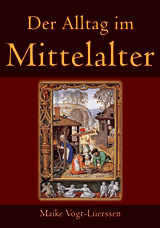
Der Alltag im Mittelalter 352 Seiten, mit 156 Bildern, ISBN 3-8334-4354-5, 2., überarbeitete Auflage 2006, € 23,90
als Buch und als E-book

Zeitreise 1 – Besuch einer spätmittelalterlichen Stadt
als Buch, Independently published, 264 Seiten, 93 SW-Bilder, € 12,54, ISBN 978-1-5497-8302-9
und als E-Book
als Buch und E-book

Agrippina die Jüngere – Die große römische Politikerin und ihre Zeit
als Buch bei amazon.de: 260 Seiten, mit Stammtafeln und 59 SW-Bildern, ISBN 3-8334-5214-5, 2., überarbeitete Auflage, € 17,90
als E-BOOK bei amazon.de: mit Stammtafeln und 70 Bildern, Eigenproduktion 2017, € 13,53

